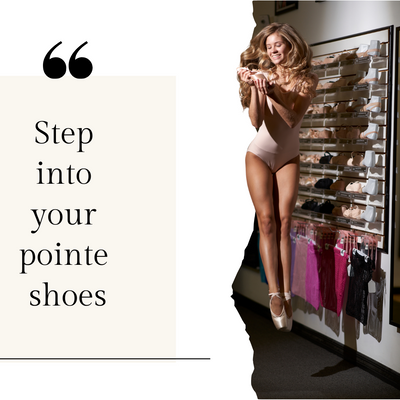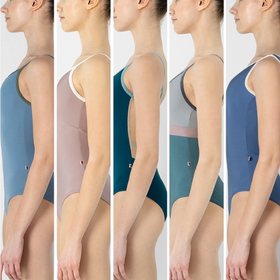How to Avoid Injury in Pointe Shoes
Understanding the Anatomy of Pointe Work:
1. Properly Fitted Shoes
The foundation of pointe safety begins with properly fitted shoes. Each dancer's foot is unique, and an ill-fitting shoe can lead to a myriad of problems, from blisters to more serious injuries. Seek the expertise of a knowledgeable fitter who can assess your foot shape, size, and arch flexibility to provide the most suitable pointe shoe for your individual needs.
Dancewear Corner proudly offers expert pointe shoe fittings daily to ensure every dancer is in a shoe that makes them safe and comfortable!
Book online to secure your preferred time slot.

2. Understanding Foot Anatomy
Educate yourself about the anatomy of the foot and the specific demands pointe work places on it. Awareness of the structure of the foot, including bones, tendons, and ligaments, can help you better appreciate the importance of proper technique and conditioning to prevent injuries.

Tips for Avoiding Injuries in Pointe Shoes:
1. Gradual Progression
Avoid the temptation to rush into advanced movements. Gradually increase the amount of time spent dancing en pointe, starting with basic exercises and progressing to more complex combinations. Building strength and technique over time is crucial for injury prevention.
2. Know When to Update
Wearing worn-out or "dead" pointe shoes increases the risk of injuries for ballet dancers. As the shoes lose their support and structure over time, dancers face challenges in weight distribution and alignment. The weakened shank and reduced elasticity lead to inadequate shock absorption, putting excessive stress on the feet and lower limbs. This compromised support can result in sprains, stress fractures, and other injuries. Regularly replacing pointe shoes is essential to prevent these issues and maintain optimal foot health. Click here for a comprehensive guide to knowing when your pointe shoes are dead.3. Strength and Flexibility Exercises
Develop a comprehensive strength and conditioning routine that targets the muscles involved in pointe work. Include exercises that focus on the intrinsic muscles of the feet, as well as the calves, ankles, and core. Regular strength training enhances stability and reduces the risk of injuries. Relevés and resistance band exercises can make the biggest difference in ankle strength and flexibility when practiced on a regular basis.4. Cross-Training
Engage in cross-training activities to enhance overall strength and fitness. Activities such as Pilates, yoga, and resistance training can complement your ballet training, providing a well-rounded approach to physical conditioning and injury prevention.








